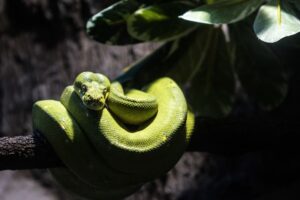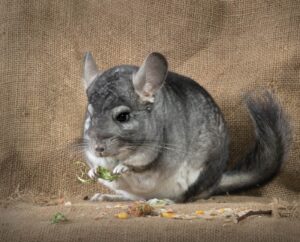Table of Contents
ToggleIntroduction
Rare chinchilla colors add a captivating dimension to the already charming world of these small, furry creatures. While the classic gray coat is widely recognized, the diversity of chinchilla colors extends far beyond the ordinary. From the striking Ebony to the ethereal Violet, each rare color variation brings a unique allure, capturing the attention of enthusiasts and breeders alike. In this exploration, we delve into the fascinating realm of rare chinchilla colors, uncovering the beauty and significance that these distinct shades bring to the world of these adorable rodents.
Classic Chinchilla Colors
Description of the Traditional Gray Coat
The typical chinchilla coat is a beautiful shade of gray and has become a symbol of these endearing rodents due to its reputation for being both soft and luxurious. Thick, plush fur and silver-gray coloring with tonal variations provide depth and volume to the classic gray coat. The fur is incredibly soft to the touch, making it a distinctive feature that has captivated chinchilla enthusiasts for generations. This classic gray is the cornerstone of chinchilla coat variation analysis, which includes the introduction of unusual hues.
Importance of the Classic Color in Chinchilla Breeding
The classic gray coat is not merely a standard; it holds a pivotal role in chinchilla breeding practices. This color serves as a baseline for many breeders, providing a reference. Point for assessing the purity and quality of a chinchilla’s lineage. Breeding programs often emphasize maintaining the classic gray color as a foundation to preserve the species’ natural beauty and characteristics. Additionally, the classic gray coat is associated with the optimal. Health and vitality of chinchillas, making it a desirable trait in breeding efforts. This emphasis on the traditional color underscores its significance as a cornerstone in responsible chinchilla breeding.
Setting the Stage for the Introduction of Rare Colors
While the classic gray coat is cherished, it also sets the stage for the introduction of rare chinchilla colors. As breeders work with the classic color, they may encounter genetic variations that give rise to unique and unusual hues. These deviations from the norm open the door to the discovery and development of rare colors, adding diversity to the chinchilla community.
The classic gray coat acts as a canvas upon which breeders can explore and experiment, ultimately leading to the creation of new and captivating color variations. As we delve into the world of rare chinchilla colors, it is essential to acknowledge the foundational role played by the classic gray coat in shaping and inspiring the ongoing evolution of chinchilla aesthetics.
Conservation And Appreciation
Importance of Preserving Rare Chinchilla Colors
Preserving rare chinchilla colors is crucial for maintaining the genetic diversity and overall health of chinchilla populations. Each rare color variation represents a unique combination of genetic traits, and their preservation is essential to prevent the loss of valuable and distinct characteristics within the chinchilla gene pool. Additionally, the conservation of rare colors contributes to the broader understanding of genetics and fur pigmentation, fostering knowledge that can be applied to ensure the well-being of chinchillas for future generations. By valuing and preserving rare chinchilla colors, we actively contribute to the conservation of these remarkable creatures and their natural diversity.
Ethical Considerations in Breeding and Conservation Efforts
Ethical breeding practices are paramount in the conservation of rare chinchilla colors. Breeders must prioritize the health and welfare of the animals, ensuring that breeding programs prioritize the well-being of the chinchillas over the pursuit of rare colors. Ethical considerations also extend to responsible breeding practices that avoid overbreeding, inbreeding, or compromising the overall health of the chinchilla population. Conservation efforts should aim to strike a balance between preserving rare colors and maintaining the integrity of the species, fostering a sustainable approach that safeguards both the chinchillas and their unique color variations.
Encouraging Responsible Ownership and Appreciation Among Chinchilla Enthusiasts
For the sake of maintaining the preservation of endangered chinchilla hues, it is essential to encourage responsible ownership and appreciation among chinchilla enthusiasts. It involves educating owners about the specific needs and care requirements of chinchillas. Promoting ethical breeding practices and discouraging impulsive or uninformed breeding decisions.
Chinchilla enthusiasts should prioritize adopting from reputable breeders who adhere to ethical standards and exhibit a commitment to the well-being of the animals. Moreover, fosters an appreciation for the natural beauty of chinchillas. Regardless of their coat color, it helps cultivate a community that values the diversity within the species. By creating a culture of responsible ownership and appreciation, enthusiasts play a vital role. Ensuring the long-term conservation of rare chinchilla colors and the well-being of these delightful creatures.
Are Chinchilla Colors
Chinchillas, with their endearing charm and plush fur, are renowned for their classic gray coat. However, within the enchanting world of these small rodents lies a spectrum of rare. And captivating colors that add a distinctive flair to their already adorable demeanor.
Ebony
Description and Characteristics: Ebony chinchillas boast a deep, jet-black fur that sets them apart from their more common counterparts. The intensity of the color creates a striking contrast, emphasizing the sleek and velvety texture of their fur.
Rarity and Exclusivity: Ebony chinchillas are considered rare, making them highly sought after among enthusiasts. The exclusivity of the ebony color adds a sense of prestige to chinchilla breeding efforts.
Violet
Unique Features and Appearance: Violet chinchillas exhibit a soft, lavender, or purple hue that gives them an otherworldly and ethereal appearance. Their rarity and distinct coloration make them a captivating addition to the chinchilla color spectrum.
Historical Context and Discovery: The violet coloration is a result of selective breeding and a testament. To the dedication of breeders in uncovering and developing unique chinchilla colors.
Pink White
Delicate Appearance and Charm: Pink White chinchillas showcase a delicate and light pinkish-white fur, exuding an aura of innocence and charm. Their gentle coloration adds a touch of whimsy to the chinchilla palette.
Genetics Behind the Pink-White Coloration: The pink-white color is a product of specific genetic combinations. Highlighting the intricate and fascinating world of chinchilla genetics.
Other Rare Colors
Explore Additional Variations: Beyond the aforementioned rare colors, the chinchilla community continues to discover and develop other unique color variations, such as Sapphire, Charcoal, and more.
Brief Descriptions and Distinctions: Each rare color variation comes with its own set of distinctive features and characteristics, contributing to the rich tapestry of chinchilla aesthetics.
Conclusion
Rare chinchilla colors serve as a testament to the incredible diversity and beauty found in nature. From the playful Pink White to the regal Sapphire, these are unique colors. Variations add an extra layer of intrigue to the already enchanting world of chinchillas. Beyond their aesthetic appeal, these rare colors also contribute to the conservation and appreciation of these fascinating creatures. As we celebrate the rarity and uniqueness of each chinchilla color. We gain a deeper understanding of the intricate tapestry that makes these small rodents such cherished companions. In the end, rare chinchilla colors stand as a testament to the wonders of nature. And the joy that can be found in the vibrant palette of the animal kingdom.







